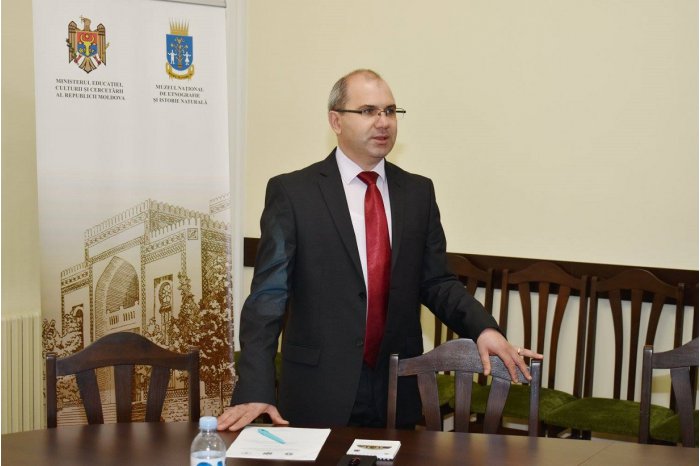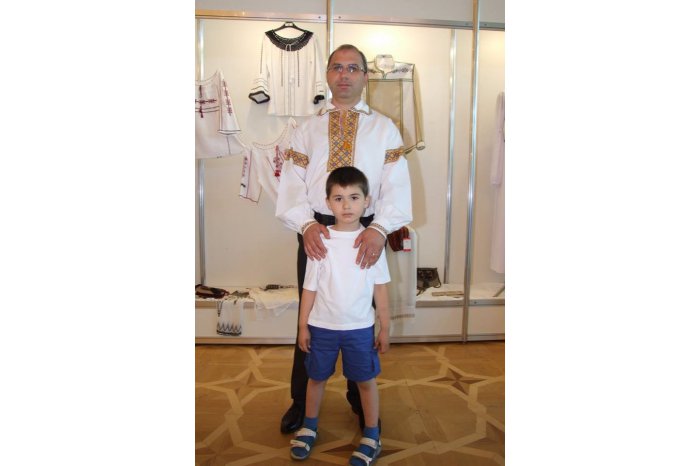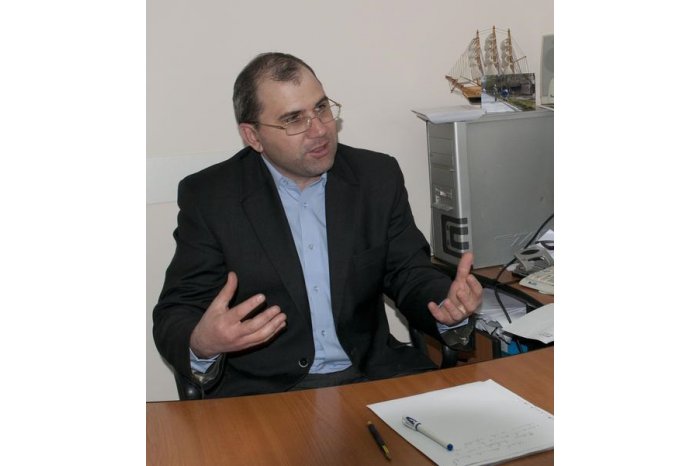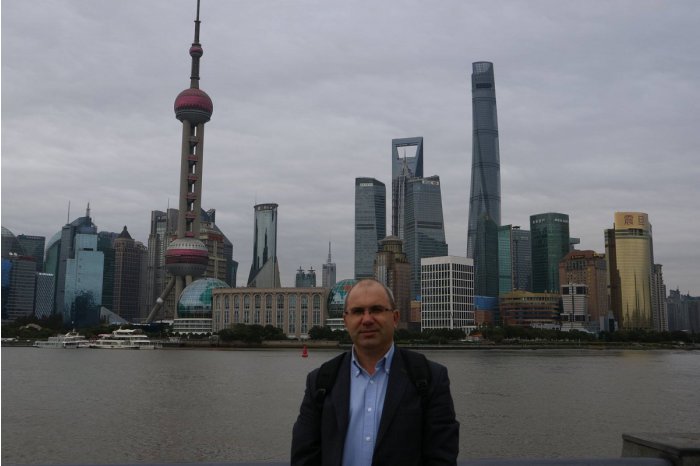Director general of National Ethnography and Natural History Museum describes institution as visiting card of Moldova
16:03 | 18.09.2019 Category: Culture
Chisinau, 18 September /MOLDPRES/ - An interview given exclusively to the MOLDPRES State News Agency by Director General of the National Ethnography and Natural History Museum Petru Vicol.
MOLDPRES: Dear Mr. Director, the National Ethnography and Natural History Museum (MNEIN), the oldest museum of Moldova, will soon mark the 130th anniversary of its foundation. I.e. it has the age of the Eiffel Tower! How this institution was created and what it represents now?
Petru Vicol: The National Ethnography and Natural History Museum is a cultural and scientific symbol of Moldova and the building constructed specially for the museum, on the period 1903-1905, represents an architectural masterpiece in the historical centre of the city. The institution has a rich history and an exceptional ethnographic and natural heritage, founded immediately after the closing of the Agricultural and Industrial Exhibition from Bessarabia, organized 24-25 October 1889. The museum appeared at an initiative by Baron Alexandru Stuart, the head of the Country Council of the Bessarabia Province and the first director of the museum, who wanted to set up a collection of pieces permanently exhibited to the public at the country council’s institution. During those 130 years of history, the museum witnessed more bad times and challenges, as well as outstanding success and achievements.
M.: How have you prepared for this anniversary? What events have you organized and what actions are to take place in the near future?
P.V.: All events organized by the museum on this period have been dedicated to the 130th anniversary of its foundation. There were more exhibitions and cultural activities both in Moldova and abroad. Along with the colleagues, we prepared a special schedule for September and October titled, 130 years of national history and culture. We will start the events on 19 September, with the launch of the MNEIN Guide and on 22 September, we will organize the Fair of Popular Craftsmen and of local producers. The most gifted popular craftsmen from Moldova have been invited to the event. We hope that it will be a nice event and that it will become a tradition in this space. On 24 October, we will invite all friends of the museum to a festive meeting, during which we will speak about the past, present, as well as about the future of this nice institution. At the event, we will show the public a fundamental work dedicated to the museum’s history, with its authors being Mihai Ursu and Constantin Ciobanu and afterwards we will inaugurate an exhibition titled, The National Ethnography and Natural History Museum – 130 years of national history and culture. We will exhibit the first pieces which are contained in the museum’s heritage in 1889, as well as documentary evidence about the institution’s evolution till present.
M.: At present, the museum has a heritage of about 135,000 pieces. Which of them are most valuable? What would you recommend a visitor coming to this museum for the first time ever to see first of all?
P.V.: The first element which impresses a lot of people, especially those from abroad, is the museum’s building, unique in this space – a monument of architecture of the national level. Then, people remained fascinated by the diverse patrimony displayed in the permanent exhibition titled, Man, Nature, Culture, thought out and presented according to an original conception, in which we discover the relation between the man and the natural environment. Many people discover the oldest Botanical Garden of the city with the Tower for Music (author Alexandru Bernardazzi) and the Fountain, built specially for the Agricultural and Industrial Exhibition from 1889. This is a district dominated by history and culture.
M.: If we have recalled the Eiffel Tower, the latter had 5.5 million visitors annually. Who visits MNEIN at present?
P.V.: We cede a lot as compared to the Paris symbol. Annually, more than 80,000 people of Moldova and from abroad visit us. I want to say that we are appreciated especially by foreign tourists, who fully discover the history, culture and nature of Moldova. We are a visiting card of our country.
M.: The museum was reorganized into an institution in the sector of science and innovation. What are the achievements recorded by the institution’s researchers in this respect in the last years?
P.V.: The progress made by the team of researchers is visible and is highlighted both by institutions of the country and from abroad. Colleagues permanently participate in national and international scientific events in the sector of material and immaterial cultural heritage and we find the results of the researches published in the Scientific Bulletin Magazine of Ethnography, Nature Sciences and Museology, as well as in other prestigious publications. Researchers are authors of more scientific monographs and studies. The museum’s team, headed by Varvara Buzila, a well-known ethnographer of the Romanian space, has managed to decisively contribute to the working out of three files of the elements registered by Moldova in the representative List of the Intangible Cultural Heritage of Humanity: singing carols in teams of men (2013), traditional techniques of making carpets (2016) and cultural practices related to the 1 March day. Presently, another joint file is under elaboration with colleagues from Romania – National Shirt – element of cultural identity in Romania and Moldova.
M.: The institution you lead carries out an exhibition activity abroad as well. What exhibitions have you organized outside Moldova in the last years?
P.V.: In the last two years, we have managed to implement more exhibition projects abroad. After a break of more years, on 18 May 2017, we displayed an exhibition titled, Image of the world knitted in wool. Carpets of the heritage of the National Ethnography and Natural History Museum at the Cris Country Museum from Oradea, Romania, where we presented the most valuable Bessarabian carpets. In 2018, this exhibition was staged in Iasi and Vaslui. An extraordinary event was the displaying of this exhibition in rooms of the Royal Tapestry Factory from Madrid, Spain, on 26 March - 17 May 2019. For the first time ever, our collection of carpets and ethnographic pieces was displayed in the halls of a prestigious European institution and with a century-old experience in the tapestry art. This event was carried out due to the support of the Education, Culture and Research Ministry and the Embassy of Moldova in Spain. Another event was the inauguration of an exhibition titled, Bessarabia and Crisana. The perenniality of the Romanian popular art, at the Cris Country Museum from Oradea, on 18 April – 21 July 2019. This is project conceived by both museums, meant to promote the ethnographic heritage of the two institutions.
Biographical record. Petru Vicol was born in the Cuhurestii de Jos village, northern Floresti district, in 1975. In 1992-1997, he studied at the History Faculty of the Moldovan State University. After the University’s graduation, he was employed at the National Archive of Moldova, holding more offices: specialist, head of section, deputy director. In 2007-1015, Vicol acted as director of the National Archive. In June 2015, he took over the office of first deputy director of the National Ethnography and Natural History Museum and in January 2017, he was appointed director general of this institution. Petru Vicol participated in more national and international conferences, probations and qualifications in the field of archive record and museography. He is member of the ICOM (International Council of Museums) Moldova and of the National Commission for Museums and Collections.




